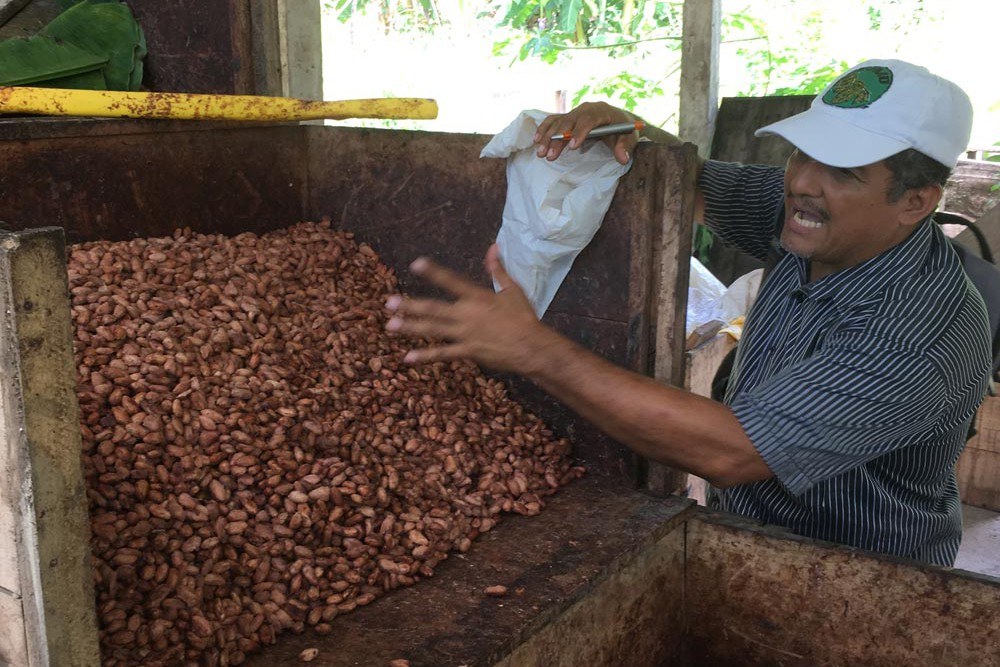Colombia has a large agricultural sector that on average generates approximately 13 percent of the country’s gross domestic product (GDP). Approximately 80 percent of Colombian producers cultivate less than two hectares of land and are challenged by high production costs, inadequate market infrastructure, insufficient agricultural extension services, and slow technology transfer. In addition, rural violence and lawlessness have negatively impacted agricultural investments and growth. Working with multiple partners from the US and Colombia, the CFP project will support Colombia’s peace process by establishing a road map for post‐conflict agricultural development, focusing on cacao and facilitating initiatives to improve economic opportunity, stability, and peace in targeted rural areas (i.e. peace geography).

The Cacao for Peace Initiative
The Cacao for Peace Initiative will provide the necessary tools and resources to empower Colombian agricultural institutions to become a leading global supplier of fine cacao while taking advantage of the rapidly increasing global demand for chocolate. This initiative will create economic opportunities for both American chocolate manufacturers and thousands of Colombian farmers and their families.
Why Colombia?
Colombia contains ideal conditions for cacao production; however, the country is far from reaching its full potential. Today Colombia supplies only 1% of the total global cacao market and 2% of the global market for fine flavor cacao. Demand for cacao is expected to increase 30% by the year 2030 and manufacturers are looking for new, reliable suppliers outside of West Africa. With potential to expand both the yield and area of cocoa planted, Colombia is ideally situated to meet the rising demand for cocoa, which is soon to outstrip supply. Additionally, the fino de aroma cacao varieties grown in Colombia are renowned for their superior quality and exceptional flavor. Smallholder farmers growing cacao in diverse agroforestry systems stand to benefit from the environmental, social, and economic sustainability promised by this crop. Improved capacity for cacao production facilitated by the Cacao for Peace Initiative will revitalize rural development in support of the peace agreement, ending 60 years of conflict in Colombia.
Cacao for Peace arrives just as the Colombian peace negotiations are coming to a close, directly linking this effort to a decisive moment in Colombia's history. As the peace negotiations conclude, creating opportunities for the rural population affected by the conflict will be essential for the long-term success of the peace agreement. Cacao production in Colombia can provide an environmentally sustainable livelihood for farmers while promoting the social inclusion of rural minority groups. Currently, 35,000 cacao producers across Colombia cultivate 153,000 hectares of land. In 2015, total cacao production was around 54,000 metric tons, with an average productivity of only 420 kilos per hectare. There is potential to greatly increase both the area under cacao production and cacao productivity via institutional strengthening, cooperative research, and extension education.
Growing Partnerships
The overall objective of the USAID Cacao for Peace Initiative is to strengthen the cacao value chain in Colombia. To achieve this, the managing partner, USDA-FAS has partnered with Colombia's Agriculture Ministry and its main agricultural research agency institution Corporación Colombiana de Investigación Agropecuaria (CORPOICA), the United Nations Office on Drugs and Crime (UNODC), the Peace Corps, the Fulbright Program, the International Center for Tropical Agriculture (CIAT), SENA (Colombia's Community College System) and a several US land grant universities (University of Florida, Pennsylvania State University, Purdue University).
Value Chain Analysis: Roadmap for the Future
A value chain analysis of the cacao sector in Colombia will be conducted by Purdue University to identify opportunities and create a baseline to measure effects of the project.
Climate change projections will be mapped by CIAT to show the future viability of cacao in Colombia in order to focus the geographic reach of the project.
Cooperative Research: Colombia-US Partnerships
A cooperative agreement between the agricultural ministry through CORPOICA and USDA's Agricultural Research Service will focus on genetic diversity collection, breeding activities, disease resistance, and transfer of best practices.
Pennsylvania State University will foster collaboration through networking, priority development, and cooperative research within the cacao scientific community in Colombia and the United States.
Education Partnerships: Building Capacity
Four Colombian Fulbright scholars will be funded to study graduate degrees in cacao at land grant universities in the United States.
With the assistance of UNODC, we will set up two education farms in Sierra Nevada to provide training across the cacao value chain. Peace Corps Volunteers will be placed at these centers to provide agricultural extension and marketing education in local communities.
Expected Outcomes
This analysis will be used to create a roadmap to guide the future of the project and the cacao industry in Colombia.
These collaborations will result in targeted research to develop improved cacao varieties for Colombia in areas such as the Sierra Nevada.
Successes from the Sierra Nevada education centers will serve as a blueprint to be expanded to other cacao-producing regions in Colombia.

